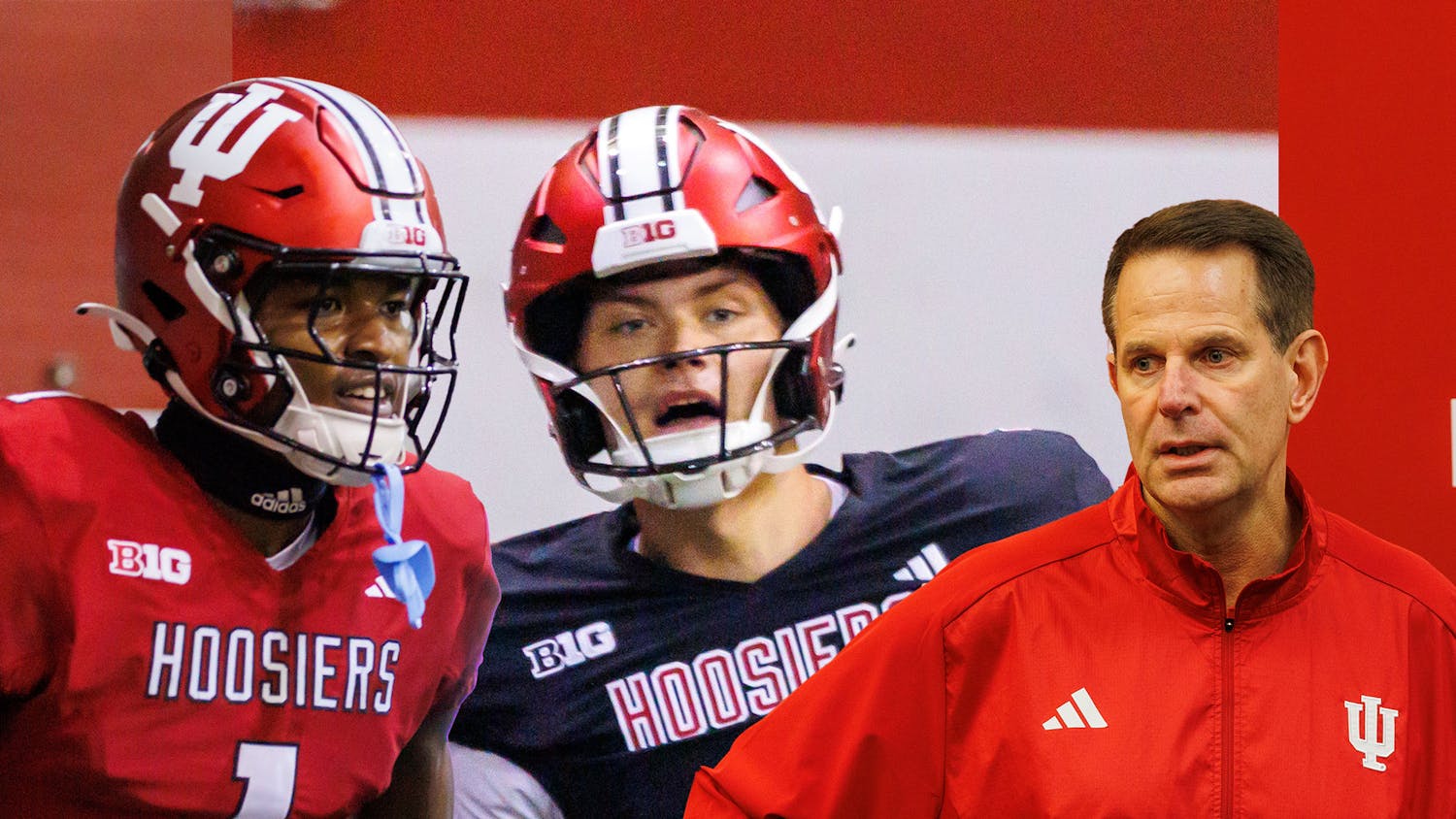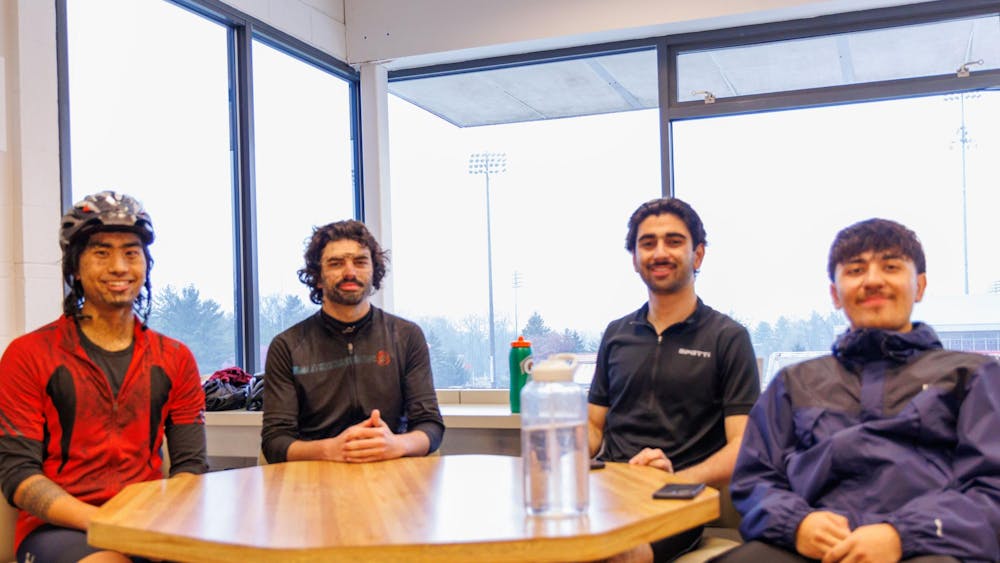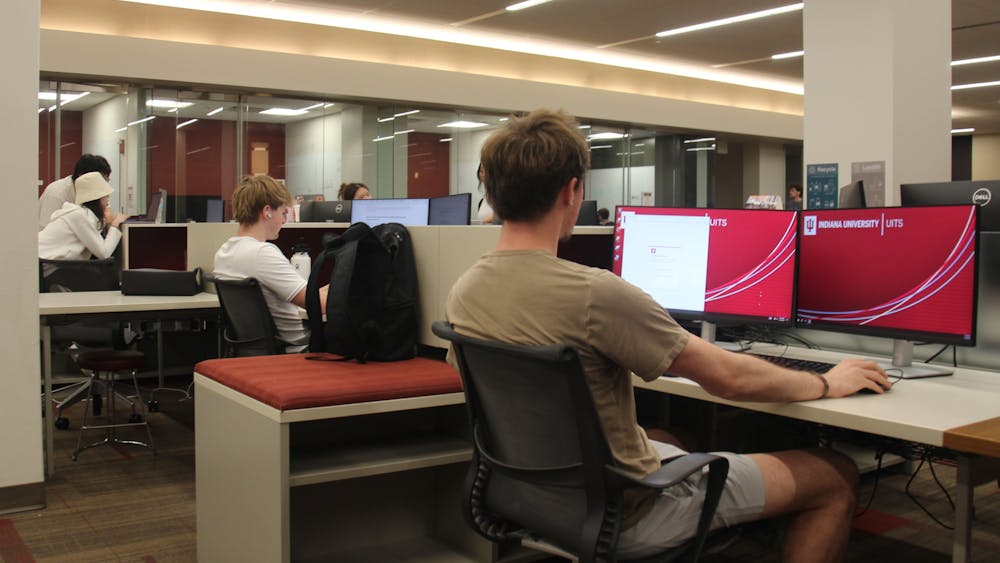Lining the edges of the walls are mannequins, each one wearing a garment from a distinct time in history. At one end, a corset and bustle cling to a mannequin. On the other, a green 1920s slip dress hangs loosely.
The collection is a part of a new exhibit titled “What We Wore,” which displays the clothing and accessories of men, women and children from the 20th century. The exhibit will be open at the Monroe County History Center from now until June.
Emily Brown, Monroe County History Center volunteer, said the wide range of clothing conveys trends throughout the twentieth century.
“It’s this wild spectrum of ups and downs, crazy and more simple,” Brown said.
She said this spectrum starts with long skirts and big, complicated bustles and corsets.
“Everything was tight and crazy and weird,” she said.
Then the exhibit moves onto simpler silhouettes before taking an abrupt turn with the flapper fashion and short dresses of the 1920s.
She said the next two decades involved a return to the conservative because of WWII, and the 1960s and 1970s marked a new kind of bizarre with bright colors and unconventional silhouettes.
Brown said the more outlandish trends of the 1970s are conveyed through a hostess dress that she said is the most striking item in the exhibit.
The dress, fluorescent pink at the top and multicolored at the bottom, is characteristic of the decade’s weirdness, Brown said.
“That dress is insane,” she said. “You can just picture someone with big hair, walking around on shag carpet while wearing that dress.”
These changes in fashion also parallel societal changes, especially those involving women’s rights, Brown said. The greatest turn for women’s rights and women’s fashion was when women won the right to vote in 1920, she said.
“Women were originally trophies restricted by corsets and tight clothes,” she said. “Eventually, women gained independence and wore looser clothing that allowed them to move and work and do things for themselves.”
These changes in the societal role of women is why women’s fashion changed so rapidly, Brown said. It is also why the exhibit only features only one men’s suit.
Collections manager Hilary Fleck said the fluidity of women’s fashion may also be due to the image of women as a status symbol. She said women were able to prove their status by keeping up with rapidly-changing trends.
To Fleck, it was not the hostess dress or even the white satin wedding dress with puffy, 1970s sleeves in the middle of the exhibit that stood out most. To her, it was the strange underwear that drew her attention.
Pantalets, slips, rubberized girdles, corsets and intricate lace brassieres are mounted onto the walls behind the mannequins. Fleck said the array of overcomplicated, ridiculous underwear was the most interesting part of the exhibit.
“Everybody loves looking at other people’s underwear,” she said.
While these styles of underwear do not endure today, Fleck said there are more timeless silhouettes from earlier in history that are still fashionable today.
In particular, dresses in darker colors that are tight at the top and flare at the bottom have a timeless quality.
“I would never, ever, ever wear that hostess dress,” Fleck said. “But I’d steal that little black dress and wear it tomorrow.”
Overall, Brown said it is the way these clothes capture past memories and connect with the attendees that is most rewarding.
“We’ve had people come in and say ‘My mom definitely wore that crazy thing,’” Brown said. “It gives people flashbacks, a walk down memory lane.”





